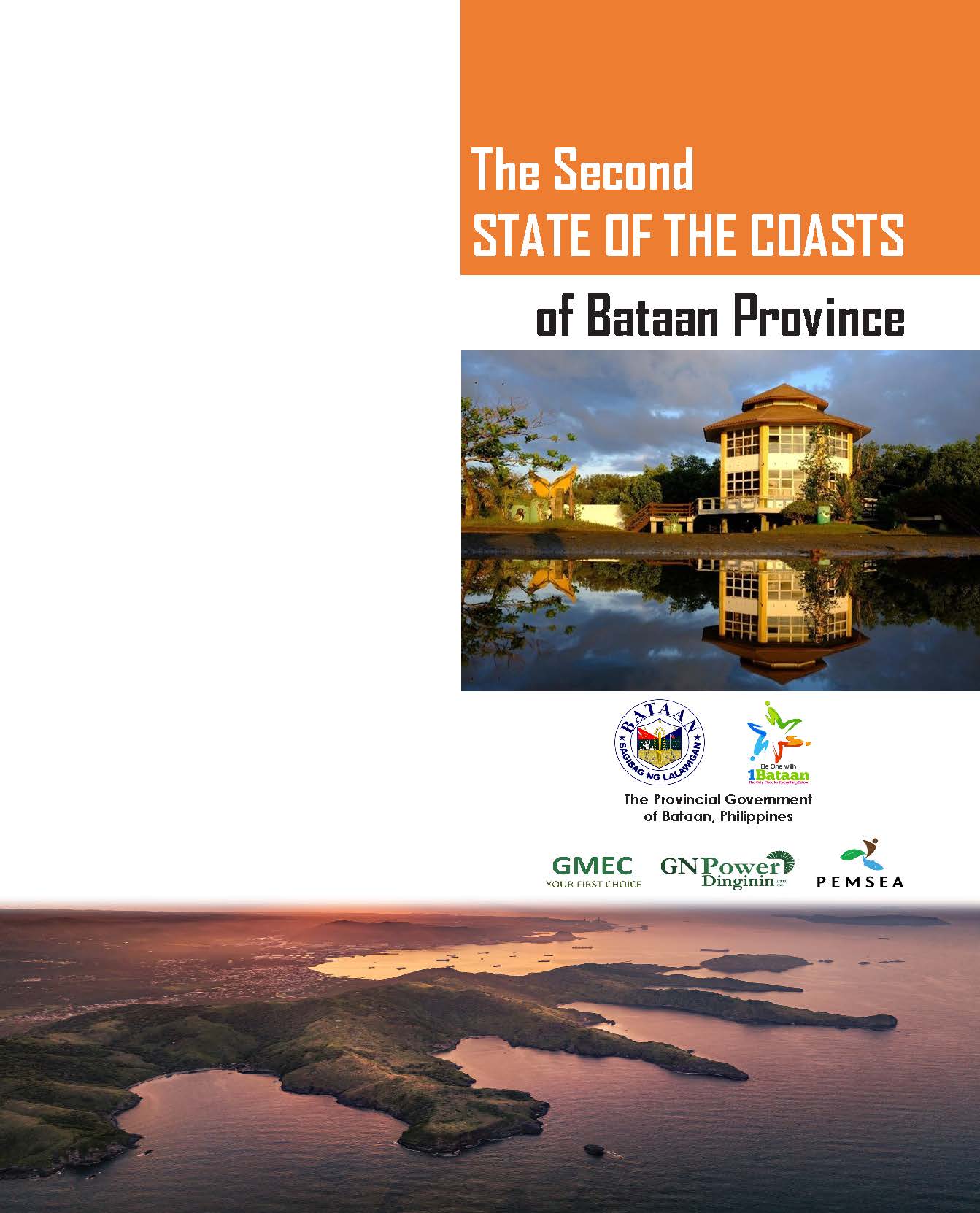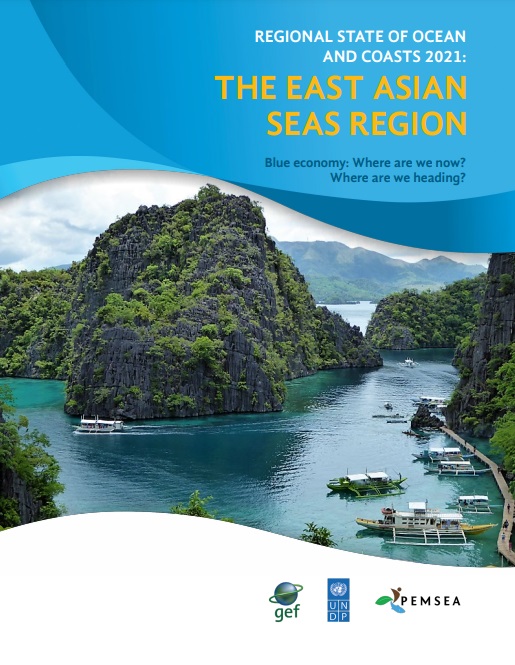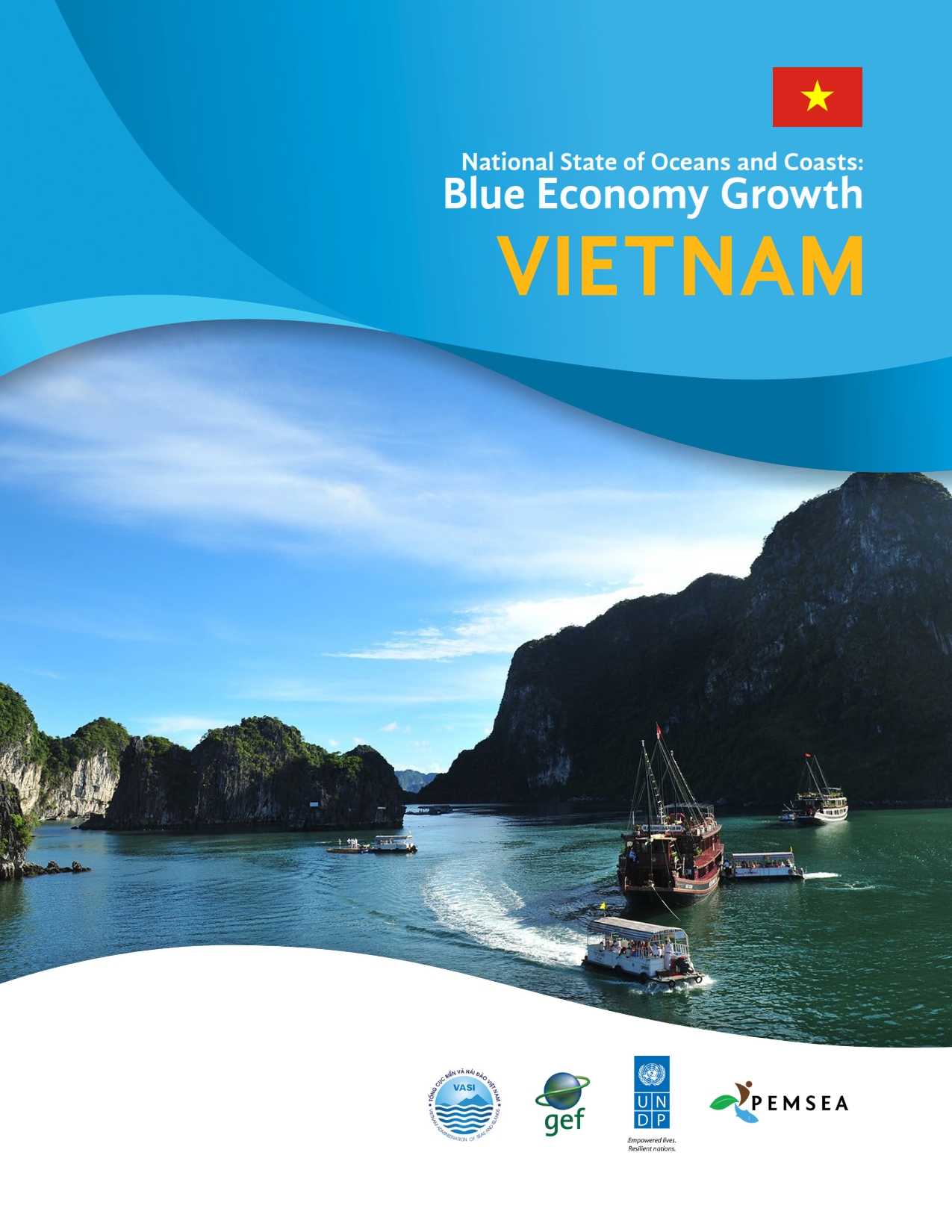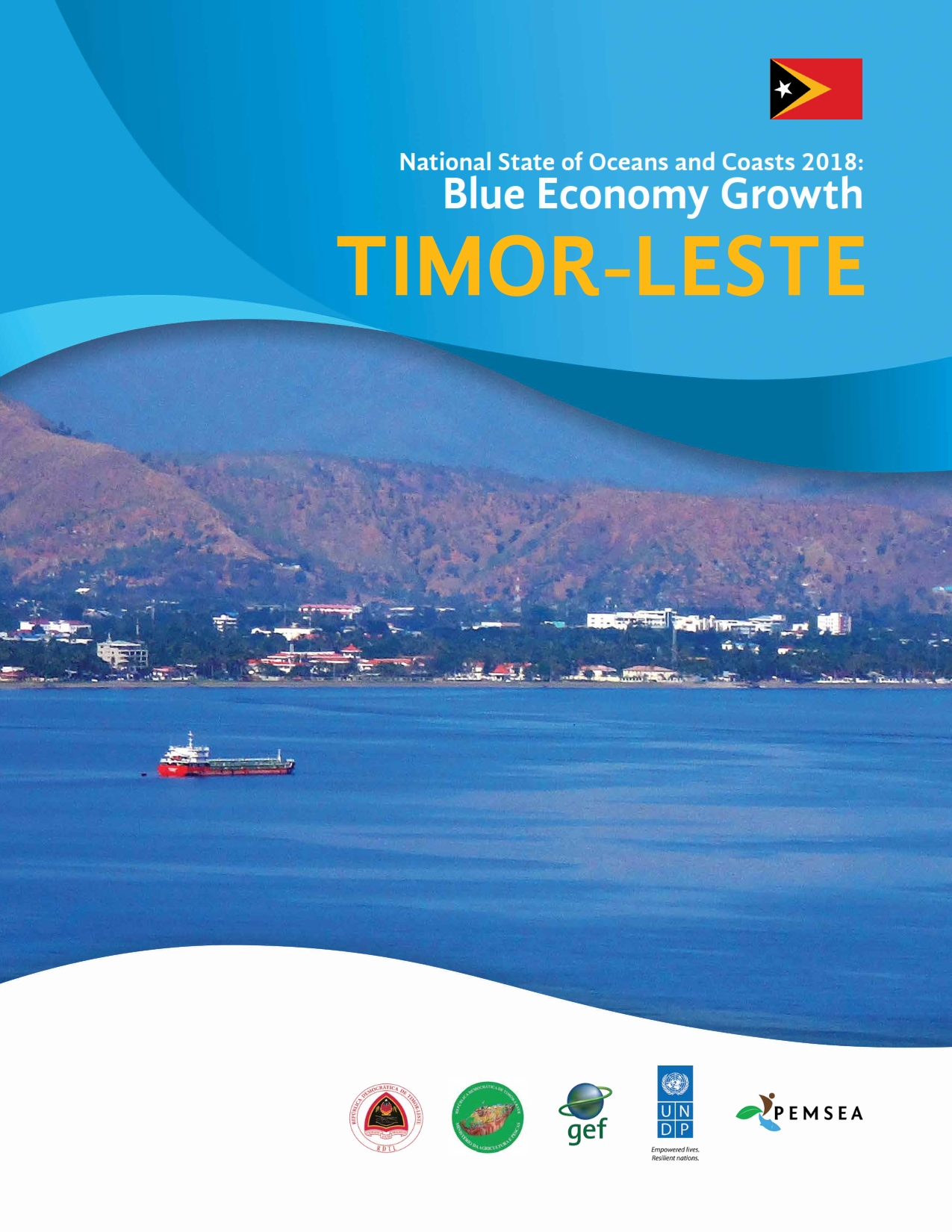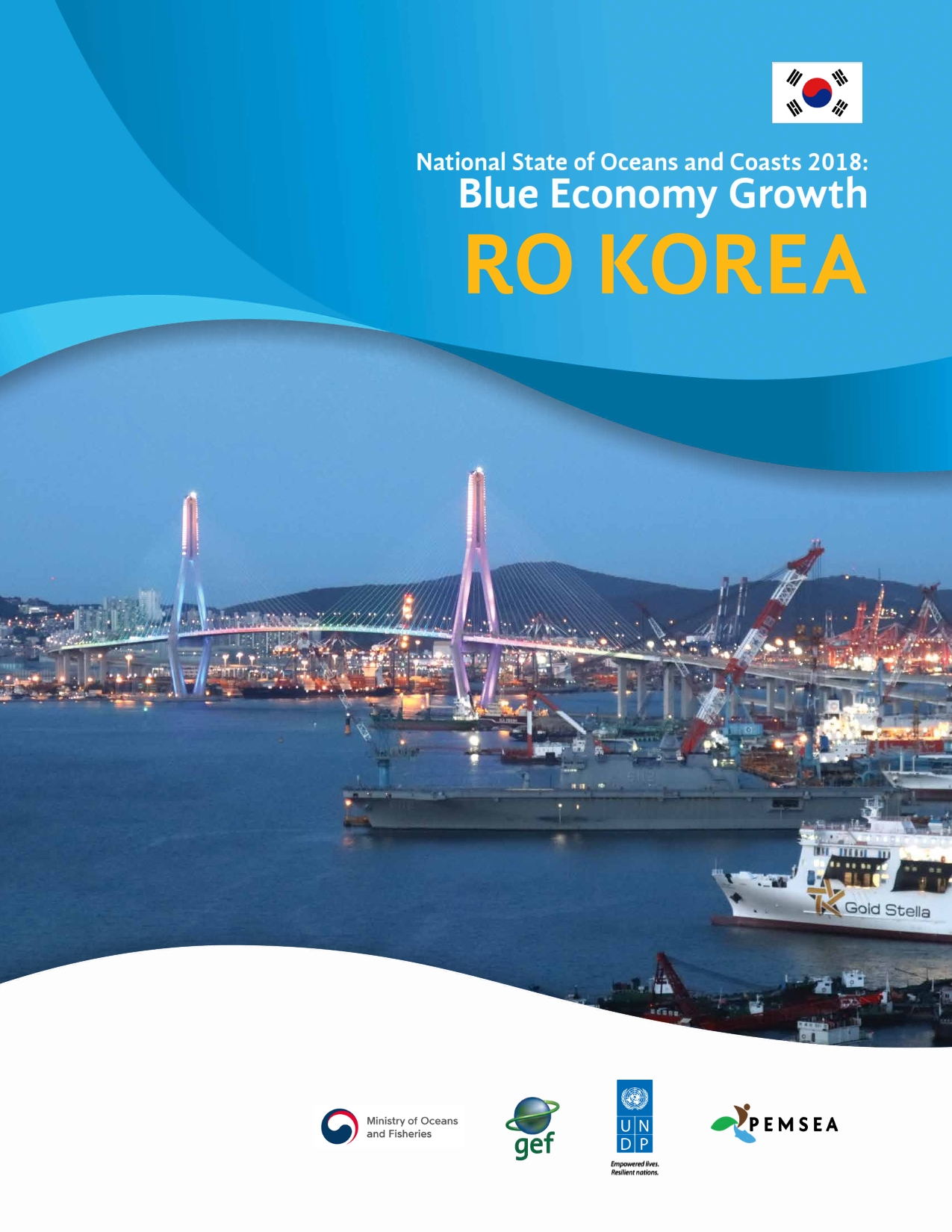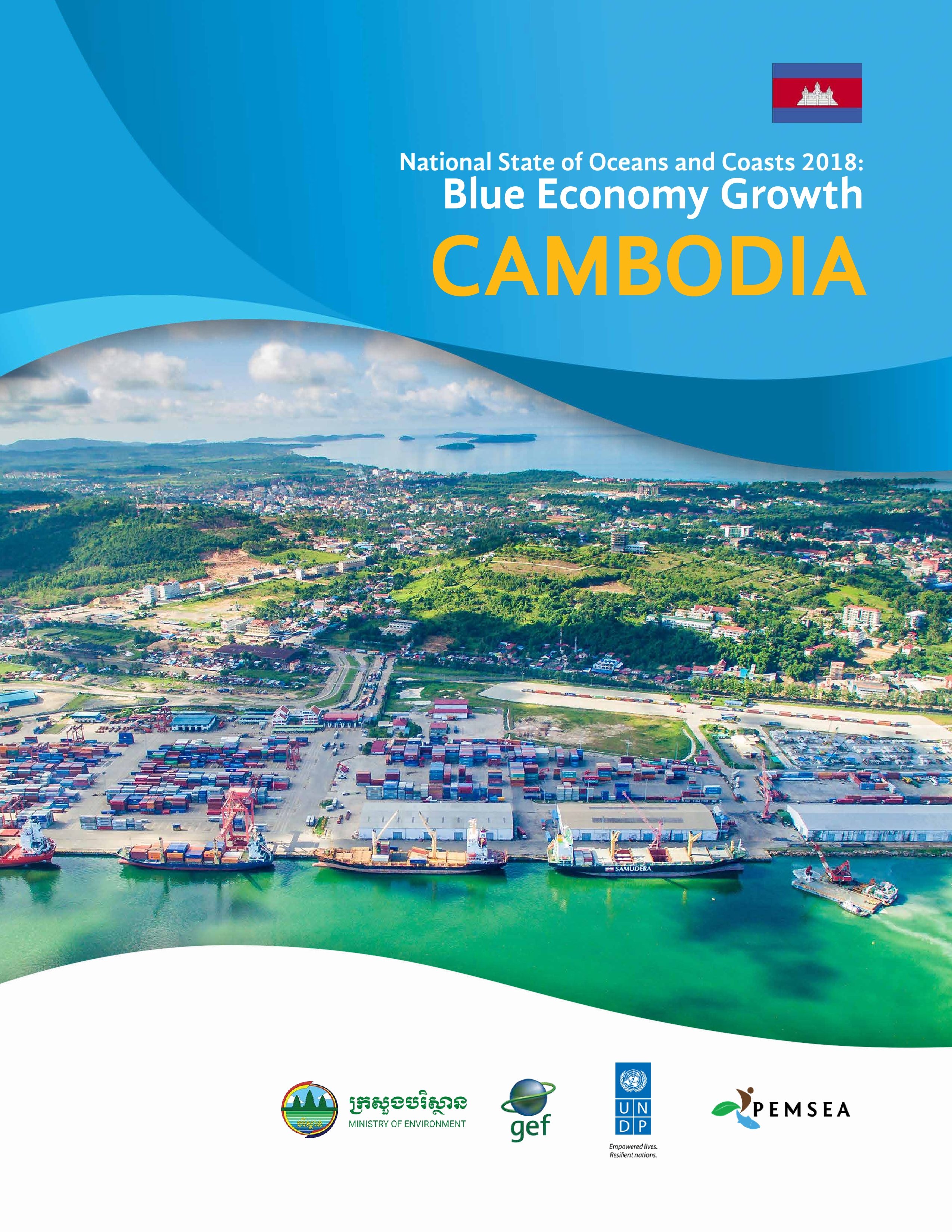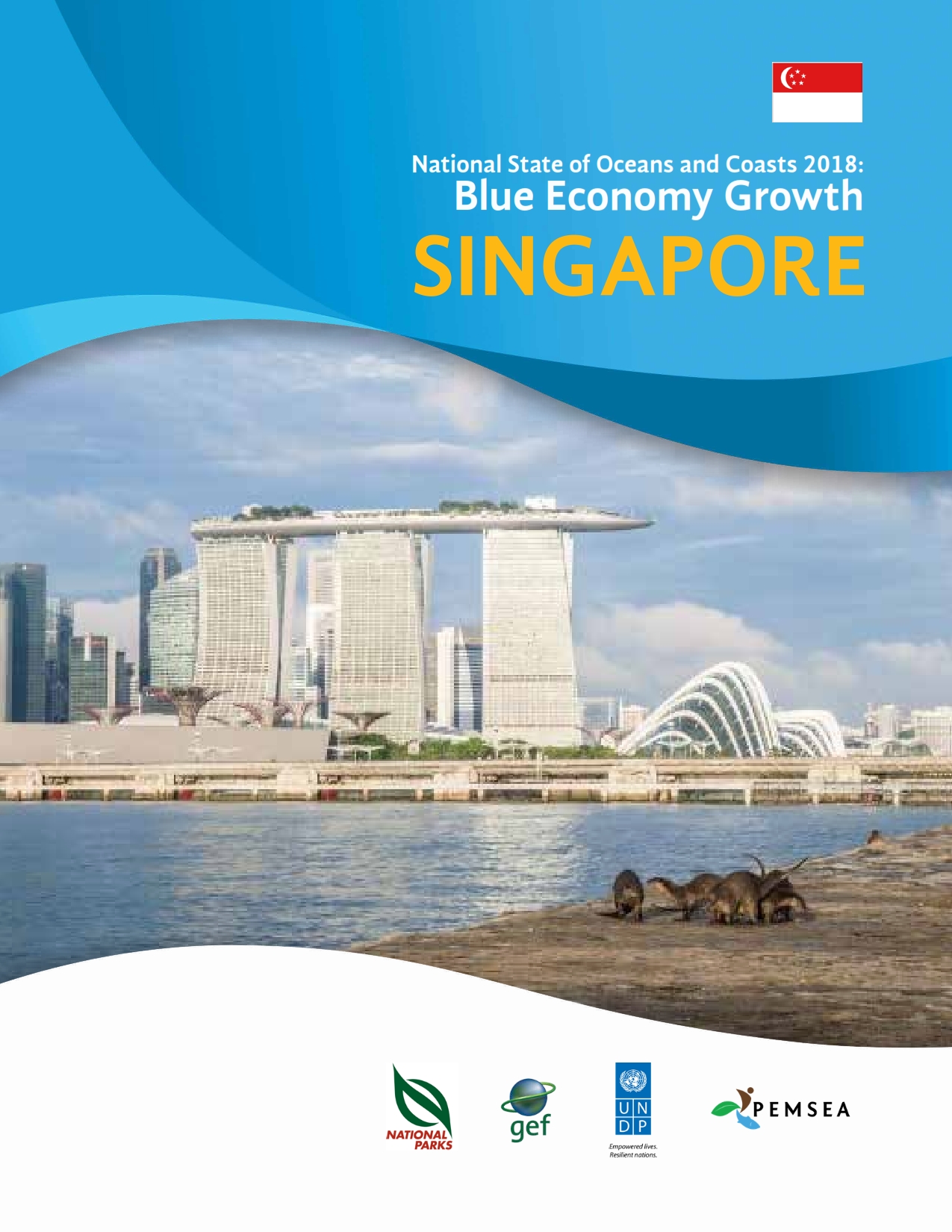
Breadcrumb
Second State of the Coasts Report of Bataan Province
The implementation of the Integrated Coastal Management (ICM) program commenced in the Province of Bataan in 2000. The first State of the Coasts (SOC) Report was published in 2017, covering the period 2000-2015. The report provided a baseline for evaluating the impacts of management interventions and solutions to issues related to the socioeconomic and environmental status of Bataan.
The Second SOC Report, covered the period 2017-2022, and identified discernible trends and changes taking place in the coastal areas of the province as a result of the implemented policies and programs, projects, and activities (PPAs) to respond to governance and sustainable development aspect issues. This Report is the consolidated output of the collaborative efforts of the provincial government, city and municipal governments, national government agencies (NGAs), the private sector, and academe.Regional State of Ocean and Coasts 2021: The East Asian Seas Region (VOLUME 1)
The ocean covers 70% of the surface of our blue planet and constitutes >95% of the biosphere. Life originated in the ocean, and it continues to support all life today by generating oxygen, absorbing carbon dioxide, recycling nutrients, regulating global climate and temperature, and providing food, energy, water, and other resources.
The ocean wealth of the EAS region.
Ocean in the national income accounts. The ocean economy in the EAS region is around US$1.5 trillion in value added in 2015.
Employment in the ocean economy. There are 61 million people directly employed in the ocean economy, however, more are dependent on the ocean for their livelihoods as small-scale, household, and informal activities are not included in the current accounts.
Blue capital and coastal and marine ecosystem services. The EAS region is home to a third of the world’s mangrove forests, seagrass beds, and coral reefs. These coastal and marine ecosystems, together with the tidal flats and salt marshes, are estimated to be worth around US$2 trillion. The blue carbon value is estimated to be US$68 billion for mangroves and US$40 billion for seagrass.
But our ocean is under stress… from climate change, pollution, habitat and biodiversity loss, overfishing and destructive fishing, and other unsustainable human activities. Bold and innovative actions are needed to protect ocean health, build more sustainable and resilient economies, reduce poverty, and help the most vulnerable.
Why blue economy?
The ocean has a major role to play in humanity’s future. As the EAS Region is gearing up to recover from the COVID-19 pandemic, the Blue Economy offers a development strategy anchored on sustainable and inclusive prosperity, low-carbon growth, and protection of ocean ecosystems to ensure food security, jobs and livelihoods, resiliency, recreation, and wellbeing. The blue economy can help the region by:
- Creating nature-based jobs, such as aquaculture, ecotourism, restoration of coastal habitats, and managing protected areas
- Offering new economic opportunities and jobs to reduce poverty through the sustainable development of key oceanic sectors, such as fisheries, aquaculture, tourism, ports, shipping, shipbuilding, and marine renewable energy, and their value-chains, and supporting new industries like marine biotechnology
- Helping the region to mitigate and adapt to climate change through blue carbon, offshore wind and ocean energy, decarbonization, and new technologies
- Fostering nature-based infrastructure, such as mangroves, to provide protection from coastal erosion, flooding, storm surge, tsunami, and other natural disasters (as well as other ecosystem services)Improving fisheries by addressing the underlying causes of overfishing and IUU fishing, and addressing aquaculture sustainability, quality, and safety
- Mitigating the threats to human and ocean health due to marine pollution, including nutrients and marine and land-based plastics, through establishment of more wastewater treatment facilities with reuse applications, integrated solid waste management systems, and reuse of plastics and other recyclables
- Advocating the inclusion of women, small-scale fishers, informal workers (such as those in the aquaculture, ports, shipping, tourism, trade and logistics industries)Advancing connectivity and trade through ports, shipping, submarine communications, and digitalization
- Promoting science, innovation, and technologies to transform the ocean economic sectors to become sustainable, climate-smart, low-carbon, resilient, and more efficient and productive
- Promoting sustainable ocean financing and new financing modalities to support climate action, biodiversity conservation, and blue economy development.
- Informing policymakers and stakeholders about the value of the ocean, and the need for bold actions now for the benefit of the future generations
More information in the brochure. A Supplemental Report is also available.
Supplemental Report: Regional State of Ocean and Coasts 2021 (VOLUME 2)
This report is a supplement to the Regional State of Oceans and Coasts (RSOC) 2021. Blue Economy: Where are We Now? Where are We Heading?. The impacts of COVID-19 on the ocean economy, and health of the people and the ocean are explored in this supplemental report. Using the initiatives, best practices, and lessons learned discussed in the RSOC report, this supplemental report provides key recommendations to move forward with the blue economy as a way for a sustainable, inclusive, and resilient recovery.
More information in the brochure.
NSOC Viet Nam
Therefore, Vietnam’s NSOC report, with focus on “Blue Economy Growth”, aims to provide initial information on the state of the marine and coastal areas of the country, including socioeconomic, environmental and institutional aspects. Preparing the first NSOC report is a stocktaking effort, involving data collection and analysis of ocean-based and ocean-related economic activities, benefits and value of marine and coastal resources, and the ocean governance and blue economy initiatives that address the pressures and impacts affecting the ocean economy and ocean health.
The NSOC report also adopts the Drivers-Pressures-State-Impacts-Response (DPSIR) framework as a way to organize the indicators and assess ocean health and the ocean economy. It is policyoriented, and it provides a framework for categorizing a problem domain, along the causeeffect chain. The highly-complex marine system has a large number of interrelated processes acting between its physical, chemical, and biological components.
NSOC Philippines
This National State of the Oceans and Coasts (NSOC) 2018: Blue Economy Growth Report of the Philippines aims to contribute to the over-all assessment and monitoring, not only of the SDS-SEA implementation, but also the SDGs and other related international agreements and national policies. As expressed in the Changwon Declaration 2012, PEMSEA and the EAS countries believe that blue economy offers a useful framework and organizing principle for the sustainable development of coastal and marine areas. With a growing global population, mounting pressures on the environment and existing resource base, and increasing access to coastal and marine areas through technological advances, the accelerated development and exploitation of coasts and oceans is a certainty. Hence, a developmental framework that will put a premium on balancing economic development with environmental protection, habitat and biodiversity conservation, and social welfare is of utmost importance.
NSOC Timor-Leste
- Compile data and information collected from different concerned agencies and organizations to serve as baseline information related to the country’s ocean economy, coastal and marine resources and environment, socioeconomic condition, governance structure, and blue economy initiatives;
- Contribute to the blue economy assessment, and monitoring of the implementation of the Sustainable Development Strategy for the Seas of East Asia (SDS-SEA), UN Sustainable Development Goals (SDGs), other international agreements, and related national laws and policies; and
- Aid policy-making, planning and management of the coastal and marine areas of the country, and monitoring of the country’s progress.
The NSOC Report uses available data from agencies, reports and studies. It is limited by lack of disaggregated data for the ocean economy, and current data on the marine environment and ecosystems, and initiatives related to blue economy development. Nevertheless, the information presented in this report provides an overview of the valuable and vulnerable oceans, and shows potential areas and opportunities for more sustainable growth path.
NSOC RO Korea
The National SOC Report provides information on the status of seas and coasts of RO Korea, including the ocean economy, the existing and potential uses of coastal and marine resources, and the corresponding benefits and impacts. Responding to the issues and pressures affecting both the ocean economy and ocean health, RO Korea adopted policies, laws, and institutional reforms as well as invested in research and development for innovative technologies, and more sustainable ocean industries.
NSOC Cambodia
Cambodia’s National SOC Report provides information on the status of seas and coasts of the country, including its ocean economy; coastal and marine resources; the existing and potential uses of such resources, and the corresponding benefits and impacts. The NSOC report of Cambodia aims to:
- support the Information Management System for the Coastal Zone and compile data and information collected from different concerned agencies to serve as baseline information for the assessment of coastal and marine areas of Cambodia;
- contribute to the blue economy assessment and monitoring of the implementation of the Sustainable Development Strategy for the Seas of East Asia (SDS-SEA), SDGs, other international agreements, and related national laws and policies;
- aid policy-making, planning and management of the coastal and marine areas of the country, including the natural resources, environment, economic activities and investments, and foster inter-agency collaboration; and
- monitor the Vulnerability Assessment and Adaptation Programme for Blue Economy Development in Cambodia’s marine and coastal areas.
NSOC Singapore
Singapore’s SOC Report aims to facilitate our understanding of the role of the ocean and its contribution to the national economy; impacts of human activities on ocean health and sustainability; potential areas for investments in environmentally-sound technologies and infrastructure; and the interventions and innovative mechanisms needed to respond to changing environment and climate. Knowing that sustainable use of the oceans is coupled with the UN Sustainable Development Goal (SDG) 14, Life Below Water, it is evident that preserving the health of our oceans is a fundamental prerequisite for business to operate in the long-term and by tackling the challenges of today.
The progressively intense and diversified use of Singapore’s coastal and marine environment (CME) necessitates an integrated approach for effective coastal management and its sustainable use. The SOC Reporting mechanism is also employed to assess the overall effectiveness of Integrated Coastal Management (ICM) implementation. In this report, we look back over a five- to ten-year period to examine the latest trends in the state of our coasts and analyze how and why the CME is changing and whether these trends fit within the context of sustainability and the blue economy development. The report provides a comprehensive outlook of different areas of sustainable development that contribute to blue economy growth in Singapore.
